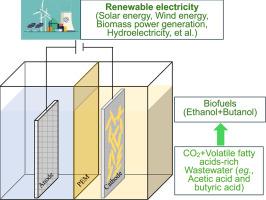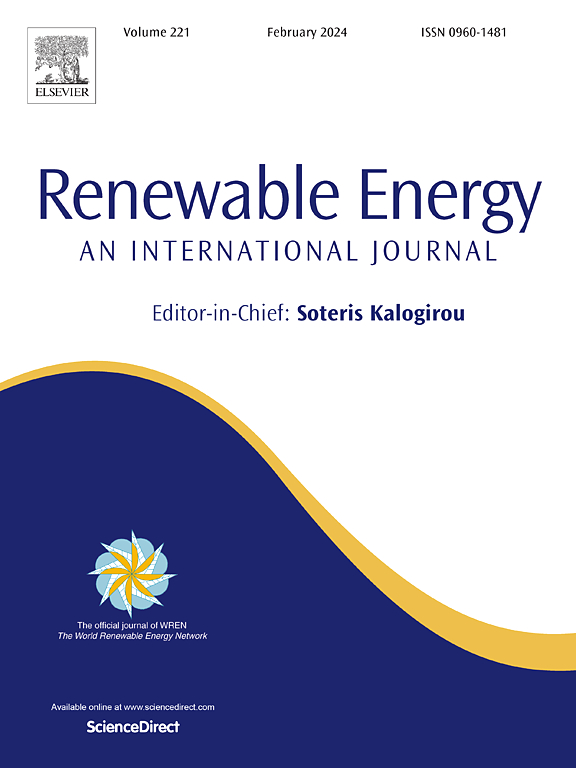在微生物电合成系统中将短链挥发性脂肪酸和二氧化碳还原为酒精
IF 9.1
1区 工程技术
Q1 ENERGY & FUELS
引用次数: 0
摘要
微生物电合成系统(MES)是将二氧化碳转化为高附加值化学品和生物燃料的一种极具吸引力的策略。本研究首次证明了在微生物电合成系统中利用 ljungdahlii ERI-2 梭菌作为生物催化剂从二氧化碳和挥发性脂肪酸(如乙酸和丁酸)生产生物燃料(如乙醇和丁醇)的可行性。在阴极电位为-0.9 V(相对于 Ag/AgCl)时,乙醇和丁醇的最高浓度分别为 12.52 ± 0.57 mM 和 5.85 ± 0.78 mM。此外,还优化了生长培养基中的微量元素含量,以提高乙酸/CO2 产生乙醇和丁酸/CO2 产生丁醇的生产率。在生长培养基中添加适当的 Ni2+ 和 WO42- 可使乙醇和丁醇产量分别提高 43.3 ± 3.2 % 和 32.1 ± 3.5 %。氧化还原辅助因子浓度分析表明,NADH 是提高酒精产量的主要还原力。根据这些结果,可以制定进一步提高二氧化碳到醇类转化率的策略。本文章由计算机程序翻译,如有差异,请以英文原文为准。

Reduction short-chain volatile fatty acids and CO2 into alcohols in microbial electrosynthesis system
Microbial electrosynthesis system (MES) is an attractive strategy for converting CO2 into value-added chemicals and biofuels. In this work, it is for the first time demonstrates the feasibility of producing biofuels (eg., ethanol and butanol) from CO2 and volatile fatty acids (eg. acetic acid and butyric acid) by utilizing Clostridium ljungdahlii ERI-2 as biocatalyst in MES. The highest ethanol and butanol concentration of 12.52 ± 0.57 and 5.85 ± 0.78 mM are obtained at −0.9 V (vs Ag/AgCl) cathode potential, respectively. Furthermore, the trace elements content in growing medium is optimized to improve the production rate of ethanol from acetic acid/CO2 and butanol from butyric acid/CO2. Adding suitable Ni2+ and WO42− in the growing medium resulted in the maximum ethanol and butanol production can be increased 43.3 ± 3.2 % and 32.1 ± 3.5 %, respectively. The analysis of redox cofactor concentration indicates that the NADH is the main reducing force for the improvement of alcohols production. Based on these results, strategies for further improvement of CO2 to alcohols conversion can be formulated.
求助全文
通过发布文献求助,成功后即可免费获取论文全文。
去求助
来源期刊

Renewable Energy
工程技术-能源与燃料
CiteScore
18.40
自引率
9.20%
发文量
1955
审稿时长
6.6 months
期刊介绍:
Renewable Energy journal is dedicated to advancing knowledge and disseminating insights on various topics and technologies within renewable energy systems and components. Our mission is to support researchers, engineers, economists, manufacturers, NGOs, associations, and societies in staying updated on new developments in their respective fields and applying alternative energy solutions to current practices.
As an international, multidisciplinary journal in renewable energy engineering and research, we strive to be a premier peer-reviewed platform and a trusted source of original research and reviews in the field of renewable energy. Join us in our endeavor to drive innovation and progress in sustainable energy solutions.
 求助内容:
求助内容: 应助结果提醒方式:
应助结果提醒方式:


